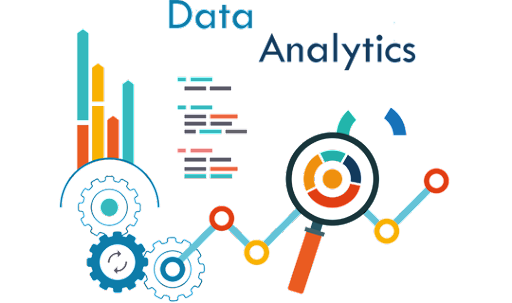Explainable AI (XAI) in Data Analytics
- 1 Artificial Intelligence’s Development in Data Analytics
- 2 Essential Elements of Explanatory AI
- 2.1 Openness and honesty
- 2.2 Capability to interpret
- 2.3 Responsibility
- 2.4 Mitigation of Bias and Fairness
- 3 Explainable AI’s Revolutionary Effect on Data Analytics
- 3.1 Developing AI Model Trust
- 3.2 Encouraging AI and Human Collaboration
- 3.3 Improving The Processes of Making Decisions
- 3.4 Compliance with Regulations and Ethical Principles
- 4 Practical Uses: In Action: Explainable AI
- 5 Applying Explainable AI: Difficulties and Optimal Strategies
- 5.1 Complexity of the Model
- 5.2 Juxtaposing Interpretability with Accuracy
- 5.3 User Education and Training
- 5.4 Ongoing Evaluation and Development
- 6 Future Trends: Developing Explainable AI to Meet the Challenges of the Future
- 7 Conclusion: Explainable AI: Boosting Data Analytics
Artificial Intelligence (AI) has revolutionized data analytics by providing unattainable insights and altering decision-making procedures. However, interpretability and openness requirements have increased as AI algorithms become more intricate and advanced. Explainable AI (XAI) enters the picture, bringing a new era where businesses can confidently make educated judgments by navigating the complexities of AI-driven statistics. There are online data analytics certification programs that will help you get up to speed in this domain. In this piece, we examine the importance of Explainable AI in data analytics, some of its fundamental ideas, and how it is changing the transparency and insights environment.
Artificial Intelligence’s Development in Data Analytics

Artificial Intelligence’s Ascent
Data analytics now heavily relies on artificial intelligence, which helps businesses automate tasks, gain actionable insights, and produce incredibly accurate predictions. Deep learning models have proven to be very adept at tackling challenging tasks and identifying patterns in large amounts of data.
Dilemma of the Black Box
The “black box” problem has arisen because many sophisticated machine learning models are opaque despite the evident capability of AI. Conventional machine learning models frequently function as intricate algorithms, making it difficult for consumers to comprehend how they arrive at particular conclusions or forecasts. This lack of transparency presents concerns in applications where understanding the logic behind AI choices is crucial, like banking, healthcare, and autonomous systems.
Explainable AI Decoded (XAI)
The goal of the explainable AI (XAI) paradigm in artificial intelligence is to develop models and algorithms that are simple enough for people to comprehend and use. XAI’s main objective is to close the gap between the complexity of sophisticated AI models and the demands placed on decision-making processes regarding accountability, transparency, and interpretability.
Essential Elements of Explanatory AI
Openness and honesty
A fundamental tenet of XAI is transparency, which highlights the significance of ensuring end users can comprehend AI decisions and procedures. Clear insights into the workings of transparent AI models enable users to understand the reasoning behind forecasts and recommendations and to follow the logic.
Capability to interpret
Transparency and interpretability go hand in hand, emphasizing the capacity to comprehend and describe the inner workings of AI models. An interpretable AI model gives consumers an explicit knowledge of the decision-making process, enabling them to understand the links between input characteristics and output forecasts.
Responsibility
A key component of XAI is accountability, which makes AI models answerable for their choices. Users can evaluate the fairness and dependability of AI results with detailed explanations of model predictions, which encourages accountability in high-stakes applications like financial decision-making and healthcare diagnostics.
Mitigation of Bias and Fairness
XAI addresses the ethical issues of bias and fairness in AI models. Organizations may detect and reduce biases in AI applications by offering insights into how models generate decisions. This guarantees that AI applications serve a variety of user groups equally and without prejudice.
Explainable AI’s Revolutionary Effect on Data Analytics

Developing AI Model Trust
Successful AI adoption is predicated on trust, and XAI is essential in fostering trust between users, stakeholders, and the larger community. Users are more likely to accept and implement AI recommendations and forecasts when comprehending how the models arrive at particular results.
Encouraging AI and Human Collaboration
Explainable AI facilitates human-AI system cooperation by improving comprehension and communication. Users are more likely to effectively engage with AI tools and take advantage of the advantages of both human intuition and machine-driven analytics when they can interpret and trust the insights generated by AI.
Improving The Processes of Making Decisions
Explainable AI gives decision-makers the data they need to evaluate and confirm AI suggestions reliably in situations where choices have significant ramifications, like healthcare or finance. This increase in decision-making procedures guarantees that crucial choices match business goals and ethical considerations.
Compliance with Regulations and Ethical Principles
XAI aligns with the increasing focus on ethical norms and legal compliance while using AI. The transparency and interpretability provided by XAI help enterprises comply with regulatory obligations and ethical best practices as governments and industries set criteria for responsible AI deployment.
Practical Uses: In Action: Explainable AI

Diagnostics for Healthcare
Explainable AI is making significant advancements in the healthcare industry, where precise and comprehensible diagnoses are essential. Healthcare practitioners can better comprehend and have more confidence in AI-generated suggestions using XAI models, which offer transparent insights into the variables impacting diagnostic conclusions. This transparency is beneficial for essential applications like treatment planning and disease diagnostics.
Making Financial Decisions
Explainable AI improves transparency in risk assessment, fraud detection, and investment recommendations in the financial sector, where decisions have significant ramifications. Clear descriptions of how AI algorithms assess risk factors can help financial organizations make informed decisions and comply with regulations.
Self-Driving Cars
XAI is crucial to the autonomous car industry to guarantee AI-driven systems’ reliability and safety. Users and regulators can verify the dependability and safety of autonomous technologies by understanding transparent explanations of how self-driving cars perceive and make decisions in real-time circumstances.
Applying Explainable AI: Difficulties and Optimal Strategies
Complexity of the Model
Because some advanced AI models are inherently complicated, implementing XAI can present some obstacles. In particular, deep learning models can be complex and challenging to understand. Organizations must balance model accuracy and simplicity for effective deployment of XAI ideas.
Juxtaposing Interpretability with Accuracy
When implementing XAI, striking the correct balance between interpretability and model correctness is crucial. Simplified models may lose accuracy but may be easier to understand. Businesses must ensure that the models they select meet their unique requirements and the degree of interpretability required for their intended applications.
User Education and Training
To successfully implement XAI, user education and training are necessary. Users must comprehend how to decipher the explanations offered by AI models and apply this knowledge to their decision-making procedures. It is ensured that customers can adequately utilize XAI capabilities by investing in training programs.
Ongoing Evaluation and Development
Explainable AI is a continuous process rather than a one-time application. It is crucial to continuously assess the interpretability, user feedback, and model performance. Companies should be ready to gradually improve their XAI systems to accommodate evolving user requirements and data trends.
Future Trends: Developing Explainable AI to Meet the Challenges of the Future
Machine Learning Models That Are Interpretable
Creating machine learning models that are easier to read is a critical component of XAI’s future. To improve the transparency of AI models without sacrificing accuracy, researchers and practitioners are actively investigating novel approaches like rule-based models, decision trees, and model-agnostic interpretability strategies.
AI Design with Humans in Mind
There will be a change in XAI toward AI design that is human-centric. In the future, artificial intelligence systems will be created with the user in mind, ensuring that the models’ explanations correspond with human thought processes and are simple enough for people of different technical proficiency levels to comprehend.
Conclusion: Explainable AI: Boosting Data Analytics
Explainable AI is a game-changer in the ever-changing field of data analytics, answering the vital needs of accountability, interpretability, and transparency in AI-driven decision-making. Organizations can foster trust, improve human-AI collaboration, and make confident decisions by deciphering the complexity of AI models.
Explainable AI adoption becomes not just a strategic requirement but also a fundamental component of responsible and ethical AI deployment as industries continue to traverse the complex problems of the digital age. Transform your data analytics, unleash the potential of transparent insights, and lead your company into a future where decisions driven by artificial intelligence are accurate and understandable, enabling users to make wise decisions in a world where AI is increasingly shaping society. Discover Data Analytics Courses.

















